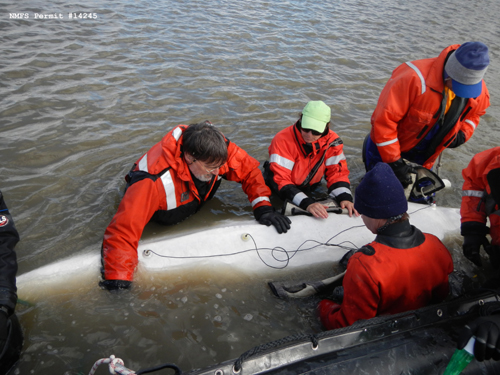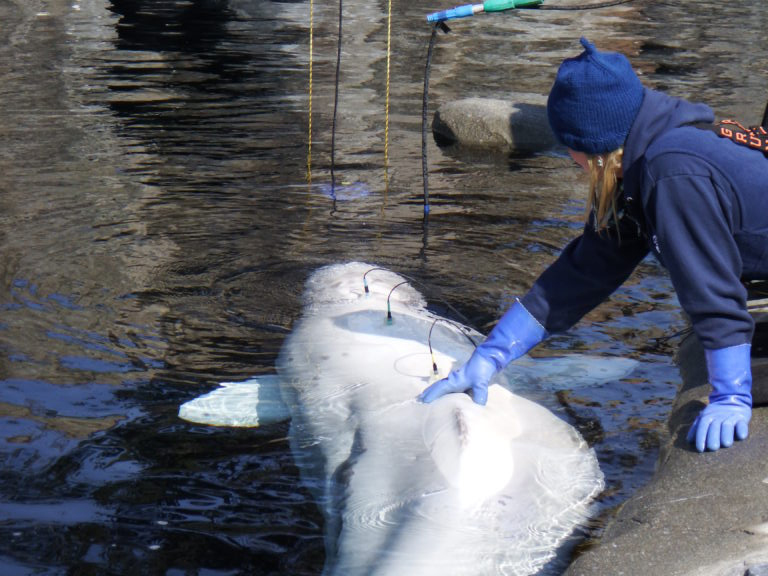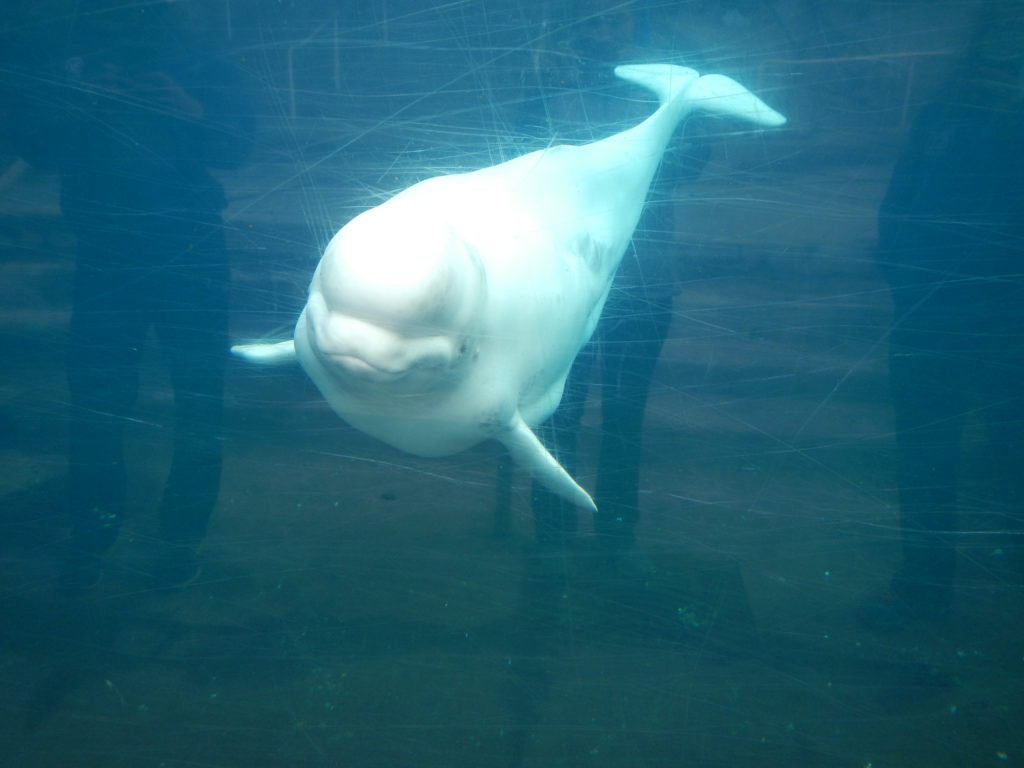Beluga calls and Beluga hearing (Bristol Bay)
Due to the opening of the Northwest Passage and interest in Arctic resources, human naval activities and consequent ocean noise (e.g., resource exploration, shipping and sonars) are increasing in northerly beluga waters. In this project we are measuring the hearing abilities of temporarily captured wild belugas from Bristol Bay. Our work is part of a larger health assessment of this population and is in collaboration with the National Marine Mammal Lab, Alaska Dept of Fish and Game, the Georgia Aquarium and Alaska SeaLife Center. Our hearing data are valuable because with these results we are substantially increasing the sample size and consequent knowledge of how this protected species naturally detects and utilizes sound. This work examines the frequencies and sound levels to which wild belugas are sensitive. A standard audiogram is being determined from the wild samples, noting the variation between animals and the audiogram of maximal sensitivity. This will be compared to available hearing data from captive belugas, evaluating any differences and potentially combining the two data sets. The hearing curves will be appraised relative to demographic and health-related meta-data from the animals from which the measurements were made. Through these data analyses we seek to: 1) define the natural and baseline hearing abilities and variability in belugas, 2) place the results in the context of potential ecological influences and that of anthropogenic noise, and 3) evaluate the validity of captive-based hearing data in relation to wild animals.


